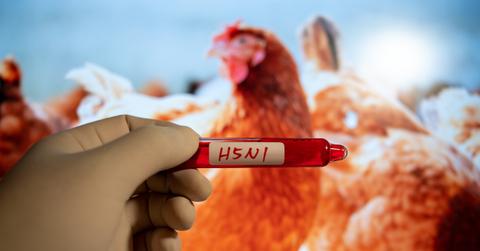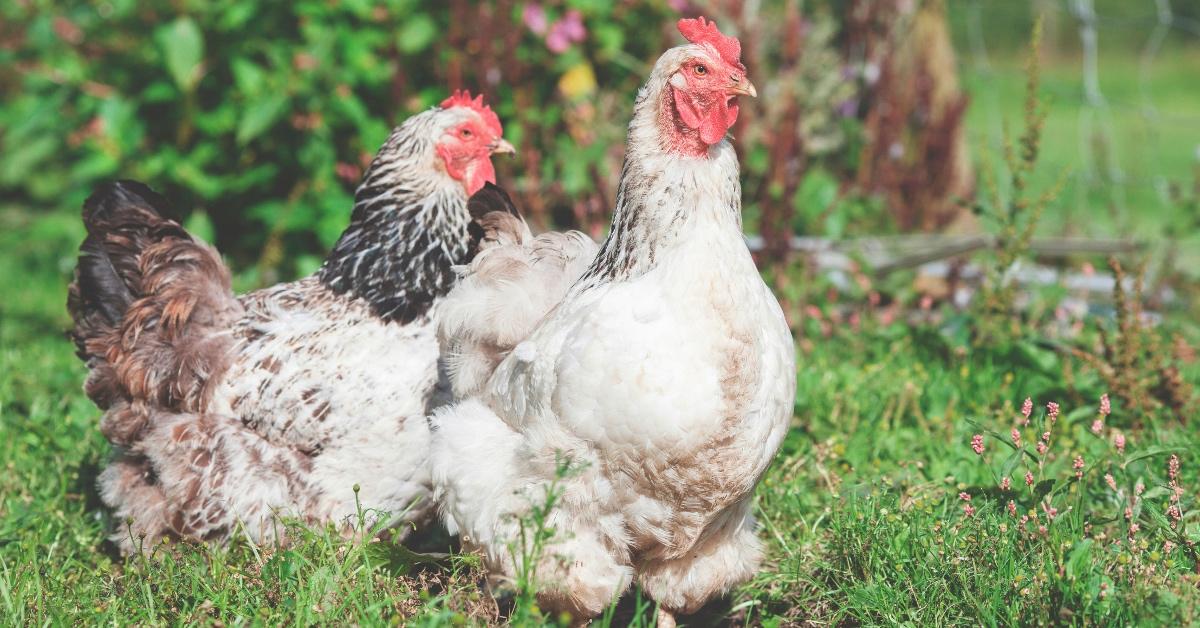How Bird Flu Presents in Humans and Companion Animals (Exclusive)
Bird flu can be fatal if contracted by some humans, cats, and dogs.
Published Nov. 15 2024, 12:53 p.m. ET

As the most common strain of bird flu currently, the spread of H5N1 has many people wondering how bird fluoriginated and how its proliferation throughout different corners of the world may cause a pandemic. From an egg shortage that shocked the industry to narratives of catastrophically inhumane means of mass slaughtering infected birds and other farmed animals, the bird flu has had shocking global ramifications.
How, exactly, has bird flu reached humans and companion animals?
To gather insight, Green Matters spoke to Farm Forward Executive Director Andrew deCoriolis, an expert in animal welfare standards, regarding how the H5N1 strain of bird flu has snowballed. Keep reading to learn more about the bird flu and how it reaches, and presents, in humans and companion animals alike.

Here are the H5N1 bird flu symptoms:
According to the Cleveland Clinic, some symptoms of bird flu in humans include fever, fatigue, sore throat, nausea, muscle aches, and cough.
Per the source, bird flu can cause other serious illnesses, including pneumonia, bacterial infections, sepsis, brain swelling, and respiratory failure. A vaccine to protect humans against bird flu is in the works.
Additionally, humans can contract bird flu when exposed to the saliva or feces of infected animals. Other methods of contracting the virus can include breathing in the dust particles in the environment of an infected animal.
Consequently, according to the Centers for Disease Control and Prevention (CDC), bird flu outbreaks have mostly reached workers in the animal agriculture industry, primarily the dairy industry and employees who work with chickens.
As of Nov. 13, the 2024 outbreak has had 46 confirmed human cases, with California accounting for nearly half (21) of the cases, all due to exposure to infected dairy cows.
"We know from recent research that the spread of bird flu among workers on dairy farms is likely much higher than the number of current confirmed cases, primarily because of how little testing is being conducted," deCoriolis tells Green Matters exclusively.
On Nov. 11, NPR reported that the first-ever case of bird flu in a human in Canada was discovered in a teenage patient, which follows another dubious first in the U.S. a month prior when bird flu was detected in a pig in Oregon.
"The person had no known contact with farmed animals and it's unclear how they contracted bird flu. This may mean that human-to-human is more widespread than currently thought," deCoriolis said.
"The nature of industrial animal farming makes it impossible for these operations to prevent the spread of the virus, either among other animals or among workers," deCoriolis added. "That spillover has now happened to people who have not been directly exposed to infected farmed animals and it's entirely possible the virus is now spreading among companion animals."

Can cats get bird flu?
According to a fact sheet from the World Organisation for Animal Health, while rare, cats can be infected by avian flu. Transmission of the virus may have taken place through exposure to infected animals or food. Loss of appetite, fever, trouble breathing, depression, jaundice, and death are all potential symptoms and outcomes of exposure to the bird flu.
If you suspect your cat may have been exposed to bird flu, seek an emergency veterinary clinic immediately.

Can dogs get bird flu?
Indeed, dogs can get the bird flu — and they already have. According to the American Kennel Club, some symptoms include sneezing, fluid discharge in the nose and eyes, coughing, fever, and vomiting. Some dogs who were infected caught pneumonia and others died.
If you suspect your dog has been exposed to bird flu, seek veterinary attention immediately.
